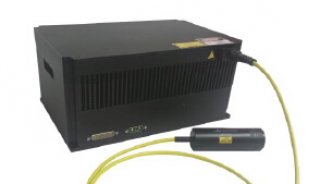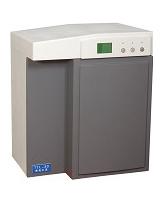Method: Lymphocyte Transformation
Method: Lymphocyte Transformation
May 30, 1990
Rosalie Veile
Principle:
Lymphocytes are transformed to establish cell lines. Mononuclear cells (lymphocytes) from anticoagulated venous blood are isolated by layering onto histopaque. During centrifugation, erythrocytes and granulocytes are aggregated by ficoll and rapidly settle to the bottom of the tube; lymphocytes and other mononuclear cells remain at the plasma-histopaque interface. Erythrocyte contamination is neglible. Most extraneous platelets are removed by low speed centrifugation during the washing steps.
Special reagents:
Cyclosporin A (CSA, from the Sandoz Research Institute; East Hanover, New Jersey 07936)
Request CSA several months in advance in order to receive it when needed.
Send a statement of investigator form to cover the release. It is an experimental drug and is used only in research work and not intended for human use.
Time required:
2-2.5 hours to prepare two transformations. Cell lines will require 3-4 weeksin a T-25cm2 flask before passaging to a T-75cm2. After passaging to the larger flask, each cell line requires several more weeks to reach a cell density of 1 X 108 cells/100 ml.
Procedure:
Collect 27 ml of anticoagulated blood in 3 yellow top tubes (citrate), 9 ml each. The blood should be set up in culture as soon as possible for best results. Blood should be kept at room temperature prior to use in this procedure.
Wipe the exterior of the tubes of blood with EtOH, divide evenly and transfer the blood into 2-50 ml tubes. Bring the volume of each tube up to 40 ml with wash media
Place 10 ml of histopaque -1077 into two other 50 ml tubes. Overlay the blood and wash media mixture onto the 10 ml of histopaque. Do this very slowly making sure not to mix the two layers. See figure 1, below.
Centrifuge tubes for 30 minutes at 1500 rpm at room temperature (no brake), in the TJ-6 centrifuge. Aspirate the top layer down to within 1/4" of the white blood cell layer.
Collect the WBC layer using a 10 ml pipet, moving the pipet in a circular motion around the inside of the tube just below the surface of the WBC layer. Transfer the WBC layer to another 50 ml tube. See figure 2, below.
Bring the volume of each tube up to 50 ml with wash media, gently invert tubes to mix.
Centrifuge the tubes for 20 minutes at 1200 rpm at room temperature (no brake) in the TJ-6 centrifuge. Aspirate supernatant.
Add 12 ml wash media, resuspend the cell pellet and transfer to 15 ml centrifuge tube.
Centrifuge 8 minutes at 1000 rpm at room temperature (no brake) in the TJ-6 centrifuge. Aspirate supernatant.
Cell counts can be done to determine the appropriate volume of media to be added to the cells. Cells should be set up in culture using a minimum of 2.6 x 106 cells/ml and not more than 7 ml per 25cm2 flask. The average WBC count of whole blood ranges from 1 x 106 cells/ml to 3 x 106 cells/ml. An ideal primary culture should contain between 5 and 7 ml of cells/25cm2 flask. Cells are resuspended in 10 ml of RPMI (without serum) for counting. If cell counts cannot be done, set up cultures in 5-7 ml of fresh RPMI, 20% FBS, and 2 µg/ml cyclosporin A.
Inoculate cells with an equal volume of virus (refer to procedure describing the maintainence of the B95-8 cell line). Incubate cells at 37 degrees C with 5% CO2 and loose caps on flasks.
Feed the culture after 24-48 hours if the media has turned yellow. This is done by removing 1/2 of the media and replacing it with 1 µg/ml cyclosporin A media. Discontinue cyclosporin A after 3-4 weeks. Do not overfeed cells. Do not increase the volume of media for at least 2 weeks. If cells do not seem to be growing, reduce the volume of media and feed only once a week. After 2 weeks, when cells are very clumpy and the media is changing color from orange to yellow within 3 days incubation, increase the volume of media by 10-20 ml. Cultures are always fed by removing 1/2 of the old media and replacing it with a slightly increased volume of fresh media. Cultures can be split when they reach 25-30 ml of media in a 25 cm2 flask.
Solutions:
Growth media: (600 ml)
To 500 ml of sterile RPMI 1640 with 2mM L-glutamine, add: 90.0 ml FBS 6.0 ml 200mM (100X) L-glutamine 0.6 ml 50 mg/ml gentamicin reagent Note:Filter sterilize through a 0.22 µm filter and store up to 2 weeks at 4 degrees C.
Wash media: (1 liter)
To 1 liter of sterile RPMI-1640 with 2mM L-glutamine, add: 10.0 ml 2.5M (100X) Hepes buffer 1.2 ml 50 mg/ml gentamicin reagent Note: Filter sterilize through a 0.22 µm filter and store up to 2 weeks at 4 degrees C.
2X Cyclosporin A media: (1 µg/ml)
To 100 ml of growth media add 2 ml of 100X Cyclosporin A.
100X Cyclosporin A: (100 ml)
Dissolve 1 mg CSA in 0.1 ml ethanol, add 0.02 ml Tween 80 and mix well. While continually stirring, add 1 ml RPMI, drop by drop. Quanitate to a final volume of 100 ml with RPMI. Filter sterilize and store at 4 degrees C for up to 4 months.
References:
Sigma Diagnostics Histopaque catalog, July 1987.
Dr. Dilley, Department of Psychiatry, Washington University Medical Center.




















